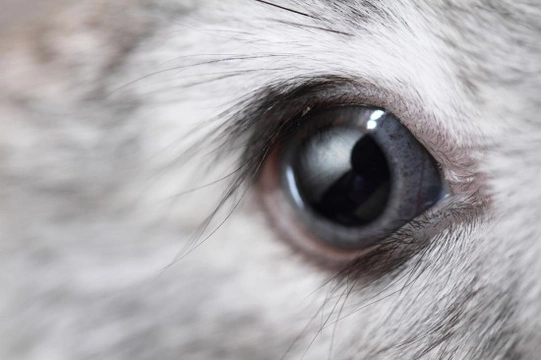
Rabbits and their vision
All mammals see slightly differently to each other, so it is understandable that the vision of pet rabbits is not the same that we have as humans have, both in terms of the range of their vision and how they perceive the world around them. Anything that helps you to develop a better understanding of your pet and how they interact with the world can only be a good thing, and so learning more about rabbits and their vision is a good idea for all rabbit owners.
Once you understand more about the range of vision that your pet has, and the benefits and limitations of this, you will be able to interact with your pet rabbit more effectively. Read on to learn more.
Rabbits as prey animals
As vegetarians, rabbits do not hunt for food, but are instead at the bottom of the food chain in the wild, turning them into a tasty meal for all sorts of predatory creatures! Rabbits have evolved several ways to counteract the prey animal effect in order to survive in perpetuity, and a large part of how rabbits live is tasked with maintaining the species in great enough numbers to avoid them dying out.
Rabbits live in underground warrens, which helps to keep them save and hidden from all but other burrowing animals, and rabbits reproduce quickly and prolifically, as many baby rabbits do not live to maturity.
The eyes of the rabbit too are designed to give them a heightened advantage in spotting predators before the predator spots them, by providing them with a superior field of vision.
The position of the rabbit’s eyes
While we as humans have our eyes on the front of our faces, meaning that we have poor vision to the sides and none to the rear, you have probably noticed that rabbit’s eyes are situated rather differently.
Rabbits have very widely set eyes positioned on the sides of their heads, which gives them the neat ability to be able to see through almost 360 degrees! The rabbit has a blind spot though, being the point directly in front of their faces in the very middle, covering around ten degrees. This means that rabbits are almost certain to spot the approach of a predator, even if it is coming up behind them. The areas that the rabbit can view through both eyes at the same time, such as forward and behind, is known as binocular vision. In the areas to the sides that the rabbit can only see through one eye at once, this is known as monocular vision.
Have you ever wondered why your rabbit will sometimes miss a treat that you place right in front of their noses? This is probably because you have put it down in front of the rabbit’s very narrow blind spot.
One of the disadvantages of this wide field of vision that the rabbit has is the fact that only around 30 degrees of the area of their vision is binocular, or viewable with both eyes. Seeing things with both eyes at once offers many advantages over monocular vision, as two eyes are necessary to provide accurate depth perception. This means that rabbits cannot view very much of their world in three dimensions, and may have difficulty judging distance and speed of approach with their monocular vision skills.
In order to counteract this, rabbits use a technique known as parallax to help them to determine depth and distance, in the same way that birds with similarly situated eyes do.
Parallax behaviour involves bobbing the head up and down when viewing something in the distance, and judging by the amount that the object appears to “move” with the movement of the head how far or close the object, or predator, actually is.
Colour and light vision
Within the eye there are cones and rods, which are responsible for receiving the sight cues of colour and light, and transmitting them to the brain where they are processed and decoded. Within the human eye, we possess three different types of cones, to receive red, green and blue light wavelengths respectively. It would appear that the rabbit is missing the red cone receptor, meaning that their vision range is within the green and blue spectrum only, in effect causing rabbits to be partially colour blind.
The rods of the eye are the tools that allow us to receive light wavelengths, and which assist us to view things in poor lighting or semi darkness. Rabbits have more rods per eye than cones, allowing them to see things clearly in dim and low lighting, such as at around dawn and dusk.
However, rabbits are actually lacking the tapetum part of the eye, the area that is important in enabling good night vision. This means that the night vision of the rabbit is almost certainly extremely poor, and why you are unlikely to see many rabbits around at night, as they will serve as a sitting target for predators that they cannot see coming.
During the dawn and dusk hours is when rabbits tend to be most active in grazing and staying out in the open, another evolutionary trait that has helped them to survive, as these transition times of the day are when the day and night predators will be less active than in full light or darkness.



